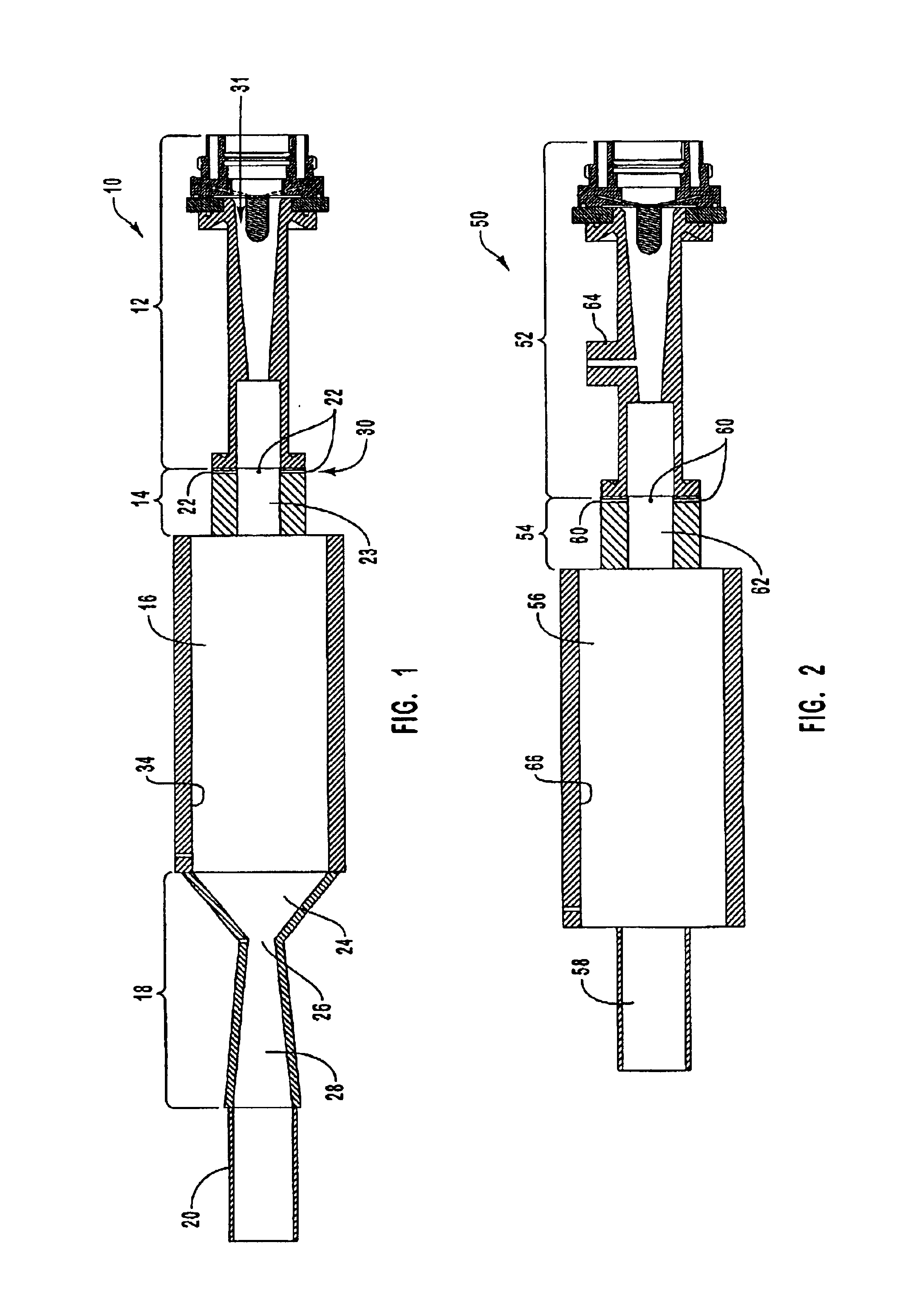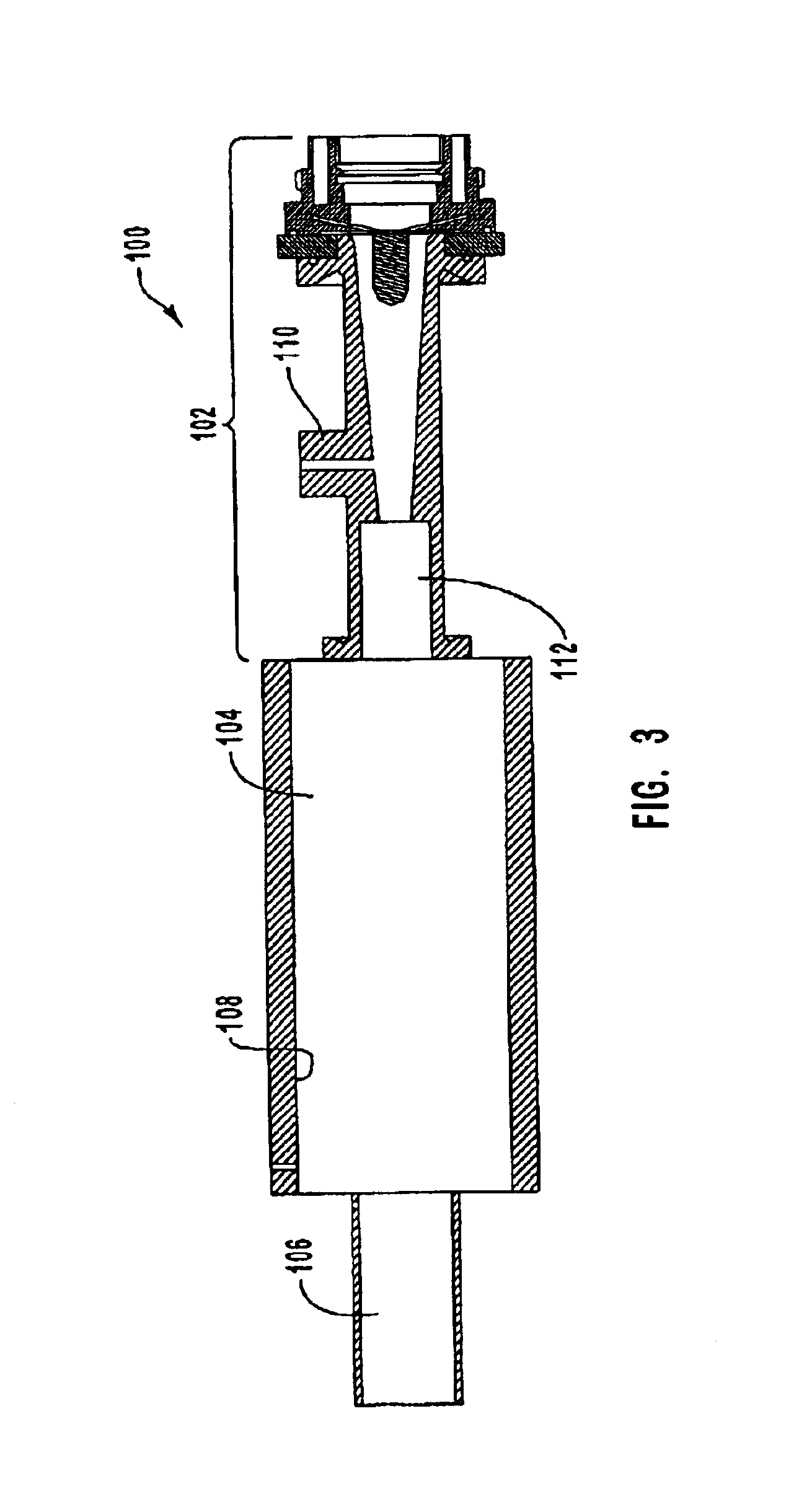Thermal synthesis apparatus and process
a technology of synthesis apparatus and process, applied in the direction of chemical/physical/physical-chemical stationary reactors, chemical/physical/physical-chemical processes, plasma techniques, etc., can solve the problems of limited success in today's economy, inability to transport energy resources economically and safely from those regions, and inability to convert natural gas to higher value hydrocarbons. , to achieve the effect of smooth acceleration and expansion of gases, reducing the kinetic temperature of gases, and reducing the yield of desired end products
- Summary
- Abstract
- Description
- Claims
- Application Information
AI Technical Summary
Benefits of technology
Problems solved by technology
Method used
Image
Examples
example 1
In this example the results of experiments with a converging-diverging nozzle are presented. Conversion efficiency as a function of the rate of methane injection is plotted in the graph of FIG. 5. In developing this data set the power deposited in the plasma was maintained constant at 60 kW and the plasma gas flow rates were constant at 160 slm Ar and 100 slm H.sub.2. The measured reactor pressure was relatively constant, varying between approximately 670 and 730 torr, depending on the rate of methane injection. Methane conversion was essentially complete, that is a conversion efficiency of 100%, at methane feed rates up to about 100 slm. At feed rates above 100 slm the conversion efficiency started to decline and dipped below approximately 95% at a feed rate of around 120 slm. The estimated bulk gas temperature in the reactor and corresponding residence time in the reactor is plotted in the graph of FIG. 6. This estimate was obtained from the measured system energy balance, the pla...
example 2
In this example the results of experiments without the use of a converging-diverging nozzle are presented. The conversion efficiency (.about.100% vs. 70%) yield, and selectivity (95% vs. 51%) of the present process demonstrated appear to be somewhat superior to the original Huels process. This may be due to better mixing, temperature uniformity, or more rapid quenching. The Huels product stream analysis as well as the laboratory scale results are summarized in Table 2.
To assess the effect of rapid aerodynamic quenching a series of tests, identical to those reported in Example 1 were conducted, but without the converging-diverging nozzle. In these tests the system pressure was maintained at between 700 and 900 torr, approximately the same as the reactor pressure in the test series of Example 1. Conversion efficiency, yield, and normalized yield results are summarized in the graphs of FIGS. 12-14. The yield of other hydrocarbon species is summarized in the graph of FIG. 15.
The yield a...
example 3
Comprehensive data for a test run are provided in Tables 3-5 below. The test run was conducted without a converging-diverging nozzle. Table 3 presents a summary of the flow rates, power, measured torch thermal efficiency, nozzle geometry, and reactor and exit pressures.
Table 4 presents yield, volume rate, specific energy requirements (SER) and relative yield for the acetylene and hydrogen in the test. The column and row headings are generally sufficient to describe the data contained therein. Specifically, the column labeled Yield %: Qt meas. provides the yield of acetylene and hydrogen from methane feedstock and measured conversion efficiency. The acetylene yield is the percent of the carbon in the methane feedstock that ends up in acetylene and the hydrogen yield is the percent of the hydrogen in the methane feedstock that ends up as elemental hydrogen. Qt denotes measurements based on the downstream turbine flow meter. The column labeled Yield %: Qt At std. provides the yield of ...
PUM
| Property | Measurement | Unit |
|---|---|---|
| temperature | aaaaa | aaaaa |
| temperature | aaaaa | aaaaa |
| temperature | aaaaa | aaaaa |
Abstract
Description
Claims
Application Information
 Login to View More
Login to View More - R&D
- Intellectual Property
- Life Sciences
- Materials
- Tech Scout
- Unparalleled Data Quality
- Higher Quality Content
- 60% Fewer Hallucinations
Browse by: Latest US Patents, China's latest patents, Technical Efficacy Thesaurus, Application Domain, Technology Topic, Popular Technical Reports.
© 2025 PatSnap. All rights reserved.Legal|Privacy policy|Modern Slavery Act Transparency Statement|Sitemap|About US| Contact US: help@patsnap.com



